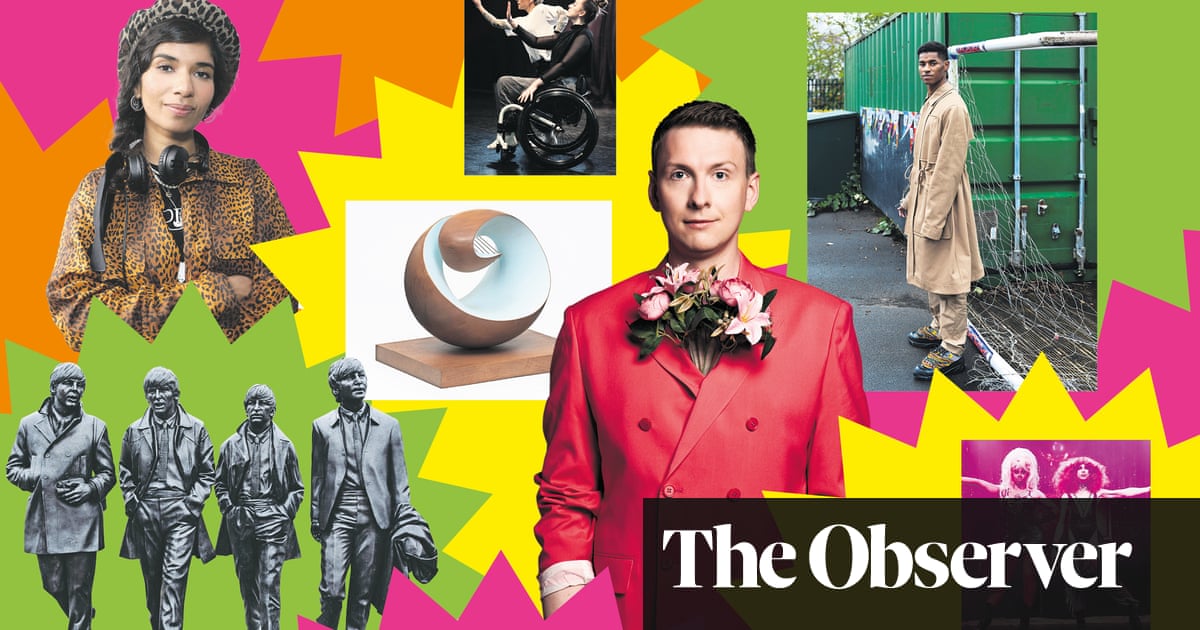
10. Titanic Memorial, Belfast
The ship, which sank in 1912 with more than 1,500 souls drowned, has become a symbol of the precariousness of existence. It is commemorated by this marble monument in the city where the doomed ocean liner was built. A female mythological figure of Fate looms over a drowning sailor held in a mermaid’s embrace. Created by sculptor Thomas Brock and erected in 1920, it’s a passionate exception to the often tight-lipped statuary of imperial Britain.
9. Robert Burns, Edinburgh
A contemporary of William Blake and the rustic bard himself, John Flaxman is a forgotten genius of British sculpture. His statue of Scotland’s national poet was commissioned in 1824 for a rotunda on Edinburgh’s Calton Hill. Today this intense Romantic homage to the poet as hero is kept in the Scottish National Portrait Gallery, but it is worth climbing the hill to appreciate its original lofty location.
8. Winston Churchill, London
Maybe one reason why this statue has become a magnet for graffiti is that it is such a striking presence in Parliament Square. A duller statue would attract less attention. For some, Churchill is a racist responsible for the 1943 Bengal famine; for others, he’s the war hero who saved Britain and defeated Hitler and his murderous doctrine of racial hate. However Churchill is seen, this statue won’t let us forget him. It is a truly characterful work of art. Not for him the proud, upright stance, full of strength and absent of doubt, so common in lesser statues. This is a much more complex, much less celebratory monument, capturing the aged politician hunched over – weighed down by events, perhaps even by his own conscience and his regrets – but still strong, still standing. There is more than a touch of Rodin’s expressiveness about it. Ivor Roberts-Jones gave his brooding masterpiece a scale and mass that holds its own among the spires of Westminster, the seat of British power once wielded by this man. It is a statue that magnificently expresses the colossal place of Churchill in British history, and the many sides of the man – a shielding or oppressive work, depending on your perception of Britain’s most famous war leader.
7. Hodge the Cat, London
This statue by sculptor Jon Bickley pays homage to a very privileged cat. Hodge belonged to the ebullient dictionary writer and 18th-century wit Samuel Johnson, who fed his pet solely on oysters. He didn’t want his servants to resent looking after a cat so he himself went to get fresh oysters from street-sellers every day. Hodge is included in the Talking Statues project, so you can hear him tell his own fat-cat story.
6. River God, Stourhead
This fantastical marble statue of a classical deity drips watery encrustations and emanates the mysterious power of nature. You’ll find it in the dark and dreamlike Grotto at Stourhead, Wiltshire. The 18th-century gardens are the setting of an ambitious array of public sculpture intended to educate the nation. Inspired by the art of Renaissance Italy, this garden god takes you out of the ordinary into the sublime.
5. Millicent Fawcett, London
Famous for her photographs of people in the street holding up signs saying what they’re thinking, Gillian Wearing brings an unpretentious touch to this suffragette memorial in Parliament Square. Fawcett isn’t portrayed in some florid monumental way but as someone just like us, who happened to do something brave. She even has one of Wearing’s signs to share her message.
4. Another Place, Merseyside
They are neither heroes nor antiheroes. We don’t know what they may have done or are capable of doing. Innocent or evil, oppressed or oppressors, the figures placed on a Merseyside beach by sculptor Antony Gormley are none of these things. They are just human beings. Returning to prehistory for inspiration, Gormley creates universal, open images of our common nature.
3. Marquess of Anglesey’s Column, Anglesey
You can barely see the statue of Henry William Paget, Marquess of Anglesey, on top of his tall column, but this monument – soaring over leafy trees and green water – is still one of Britain’s most memorable. It shows Anglesey leaning on a stick, a reference to the fact that when this commander in the Napoleonic wars was chatting to the Duke of Wellington at Waterloo, a cannonball tore off his leg.
2. Rodin’s Burghers of Calais, London
This compassionate masterpiece asks us to feel for the oppressed. The six citizens of Calais who offered their lives for their town in the Hundred Years War become universal figures of human suffering in Rodin’s expressive hands. As they gesture their supplication in poses that embody a powerful range of moods, from silent dignity to tragic eloquence, they bear witness to history’s crimes and speak for all victims.
1. Verity, Ilfracombe
There’s no danger of Damien Hirst’s colossal bronze bisected woman ever fading into the background as so many statues do. She towers over Ilfracombe harbour in Devon, raising a sword skyward for even more height. Hirst explores his obsessive theme of our secret inner anatomy with echoes of Leonardo da Vinci and no regard for anyone’s idea of good taste. This stupefying statue doesn’t commemorate some famous person. Instead, it looks inside us all.












